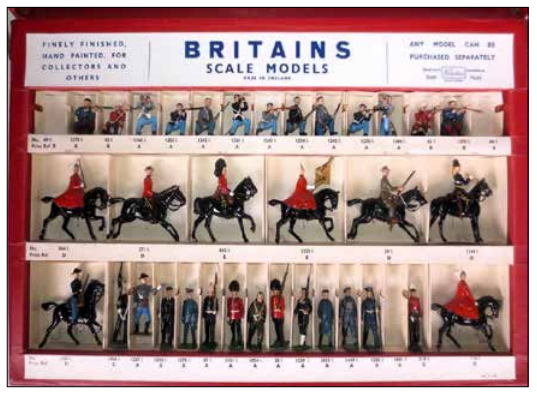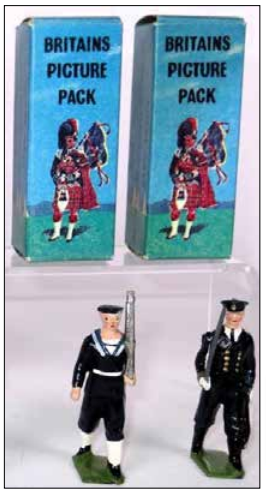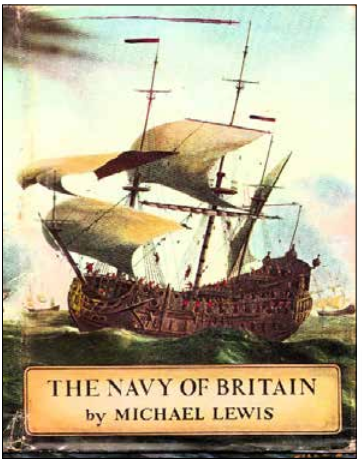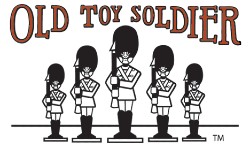The Senior Service as Represented by Britains
1. Introduction
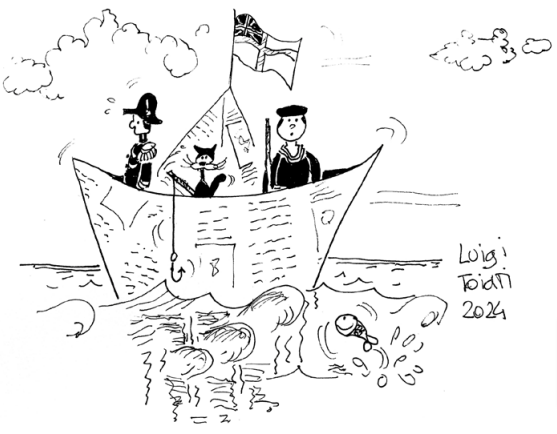
‘’It is upon the navy, that under the good providence of god, the wealth, prosperity and peace of these islands and the empire do mainly depend’’ quote from the Articles of War.
The Royal Navy is traditionally the oldest part of the British armed forces, founded during the reign of Henry VIII. It is therefore known as the ‘’senior service’’. From the nineteenth century until the second world war, it was the world’s most powerful navy. As an island nation, the sea played a pivotal role in defending Britain’s shores and enabled the British to project power across the globe. This is the first of two articles, focusing on toy soldiers made by Britains. Part two on other makers will follow next year.
A career in the Royal Navy would have been a popular choice for the youth of the pre-war period, “Join the Navy and see the world!”. Books such as The Wonder Book of the Navy published in the 1930s and later stirred the imagination and painted a romanticised picture of life at sea.
Recruiting Poster
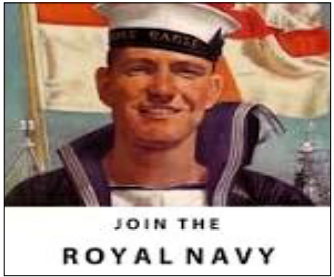
Recruitment posters were used as an advertisement to recruit people into the military, with an appeal to patriotism, adventure and greater social status remaining the main selling point. They would play an important role during the wars. Vintage posters were a combination of art, propaganda and graphic design and are now quite collectable. These were also printed on cigarette cards!
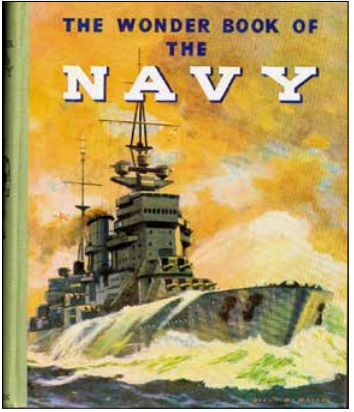
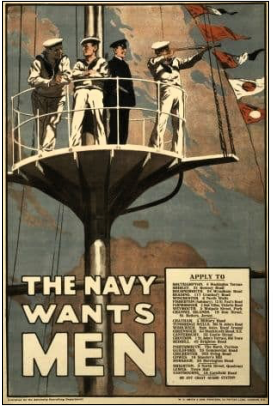
Cigarette Card album
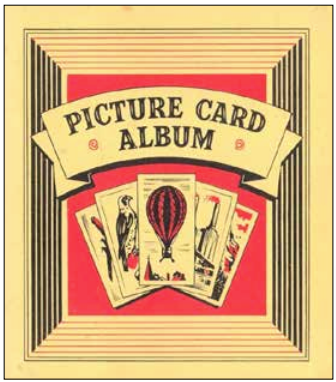
Cigarette cards were trading tokens issued by Tobacco Companies between 1875 and the 1940s, aimed at attracting customers and keeping them hooked to a particular brand. Collectible cards were included within their packs of cigarettes. The card sets documented popular culture, with a focus on people, places, military uniforms, heroes and events. Each set typically consisted of 25 or 50 cards.
In an era when most people smoked and cigarettes were issued freely to servicemen, these cards were highly collectable – military subjects being amongst the most popular.
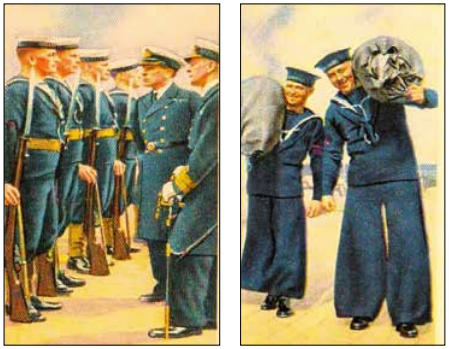
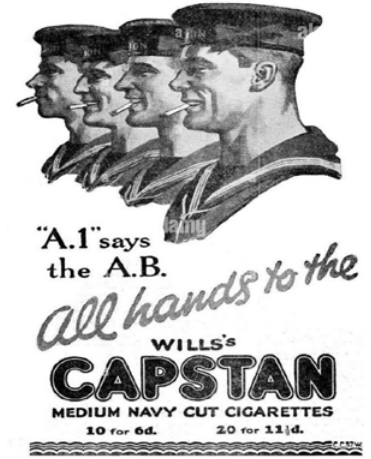
2. Uniforms of the Royal Navy
The current Royal Navy (R.N.) uniform dates back to 1906, which replaced an earlier version introduced in 1856. Their uniforms changed very little over the following years, remaining almost unaltered untill the present day.
R.N. officers and ratings have several different uniforms, some blue and some white. The familiar No.1 blue uniform is still worn on ceremonial occasions. The white, warm climate No.1, dress uniform is a white version of the traditional sailor’s suite.
More up to date and practical working uniforms replaced the traditional kit in 2015. These are known as the No.4. Dress RNPCS, Personal Clothing System.
3. Britains first representation of Royal Navy – Bluejackets
Not to be left out, the Senior Service were represented by an amazing number of Britains sets almost from the start of their production of toy figures. Lack of a colourful dress uniform and a pallette of either blue or white did not deter Britains from producing many different Naval sets from 1897 to the last hollowcast set in 1966.
The first set was simply entitled Bluejackets. The oval bases used initially (top set in the photos) were replaced by square in 1910.
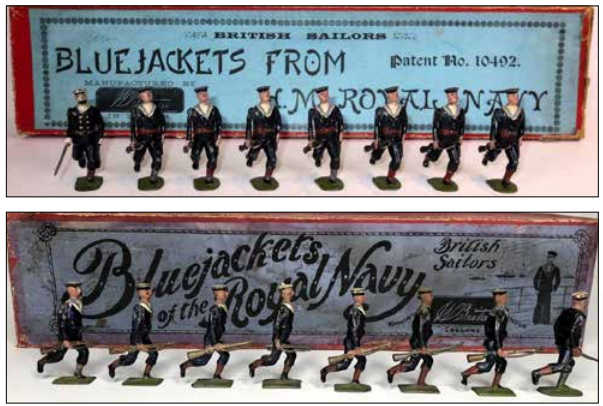
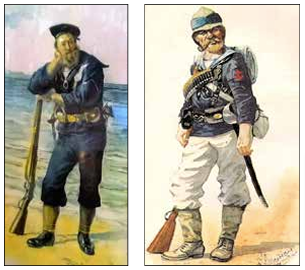
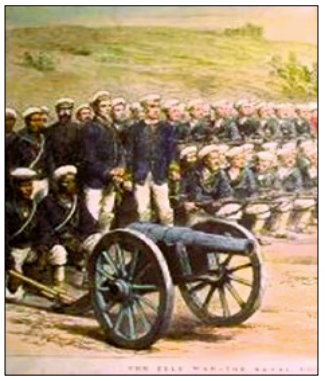
4. Naval Landing-Party
Throughout the nineteenth century, the Royal Navy had a strong tradition of landing Naval Brigades in trouble spots that were difficult to access for the Army. The Navy was in a position to land forces made up of Marines and Bluejackets as most ships carried light field guns which could be broken down for easy transportation. Britains wasted no time in introducing their second naval set hauling the same gun as used in the popular Mountain Artillery set (No 20).
Set 79 comprised 8 Bluejackets hauling the gun and introducing a new limber which also held
the ammunition. They were accompanied by the same running petty officer used in Set 78. The set had semi oval bases until c.1920. The set was very popular, it continued after the 2nd World War almost until hollowcast production ceased in 1966.
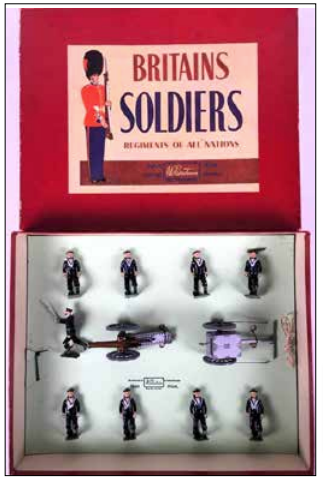
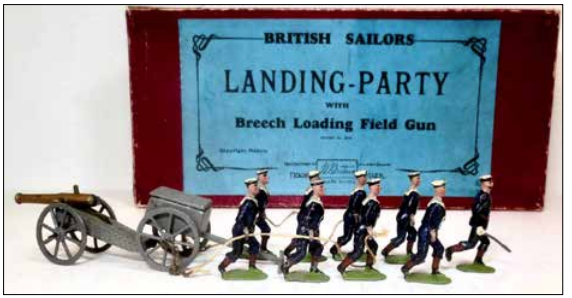
5. Whitejackets
Set no 80 was also introduced in 1897. The Whitejackets are wearing the summer uniform whilst the Petty Officer is wearing the dark blue regular pea jacket and trousers. The set had oblong bases from 1897-1910, with sailors running at the slope. They then changed to square bases and soon after to running at the trail.
The next standard size set was Set no 151, the Royal Navy Volunteer Reserve. This was introduced in 1908. It comprised seven square based figures with rifles at the advance arms position with a Petty Officer who had a movable arm, soon replaced by a fixed arm figure. Initially the bases were dated (up until 1920).
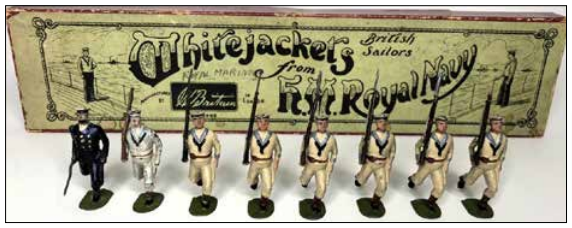
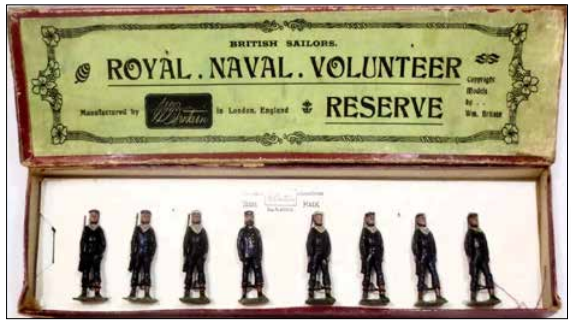
6. Naval Officers
After the first World War, Britains introduced a set of new figures portraying various officers, including two admirals. Set 207 also presented two midshipmen but the petty officers were the same as the one used in Set 151.
Set no. 1911 introduced a set of mainly new figures, in both Blue and White uniforms. It was introduced in 1940-1941. Post War, the set was reduced to seven pieces 1946-1959.
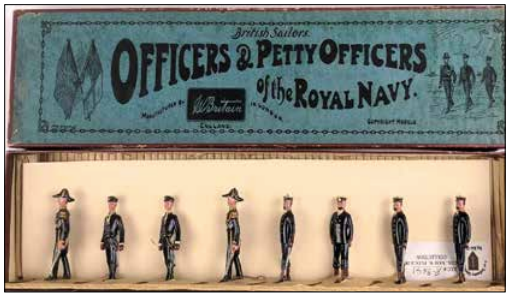
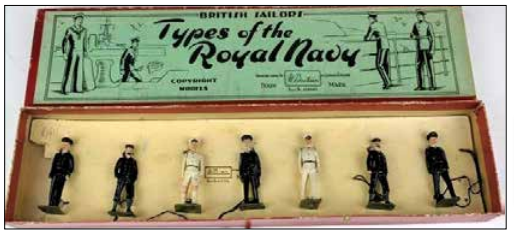
7. More Other Ranks
Two new sets depicting other ranks were also introduced, first in 1937, probably as part of Britains efforts to help people reenact the Coronation. Set 1510 contained 8 Bluejackets marching empty handed in regulation dress. The pre-war set, issued 1937-1941 had white cap tops. After WW II they were given blue caps.
Set 2080 was introduced in 1953, again probably linked to Queen Elizabeth’s Coronation. This time the figures were marching at the slope with a new officer leading them. Produced 1953-1961, the set was reduced to seven pieces in 1960.
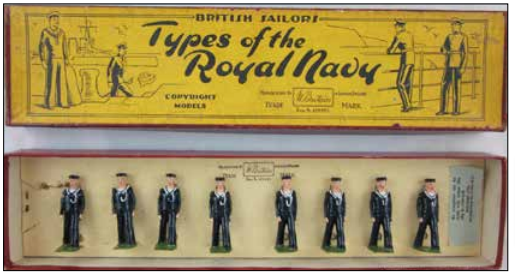
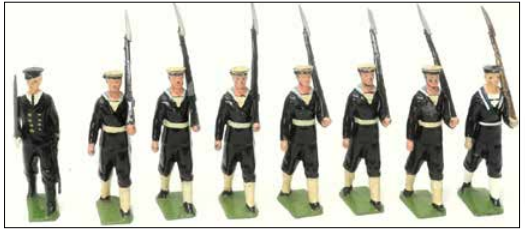
8. 2nd grade figures and other lower priced items
Britains did not neglect the cheaper end of the market, offering a more affordable alternative to the best quality sets. They came in varying sizes, but all were in a 2nd grade paint finish. Some were sold singly, others in boxed sets. Britains decided to paint up every fixed arm figure in the inventory in a 2nd grade finish and then issue them unlisted. Naval figures were included in the following series.
a. series These were introduced c.1929. In this year there were large gaps in the numbering system of this series. Sets 101a-115a were unlisted.
b. series These were small size figures (44mm), introduced 1907-1914. Sold in sets, usually in boxes of 4-7. The foot figures had fixed arms. The Naval figures included Set 22b, Bluejackets and 24b, Whitejackets.
n. series This was similar to the a. series but sold singly. Produced 1938-1940. Naval figures included: 49n, Bluejacket; 50n, Whitejacket; 51n, Midshipman; 92n, Bluejacket.
w. series Again similar to the a. series. W was for Woolworths, and they were sold in their stores only – post 1918. This included 156w, Bluejackets and Whitejackets – box of 6 and 162w, a similar set of 10 figures.
9. The b series sets
Two Naval sets were introduced to support the Army in Britains first grade b series. Set 22b were Bluejackets at the slope while Set 24b were Whitejackets. Initially on oval bases, a slightly larger figure on rectangular base was introduced in 1912. They were all at the slope with no officer.
A plain Printer’s decorated box with Britains name and trademark omitted was used for the packaging of some sets of 2nd grade figures at the time, such as Set 156W.
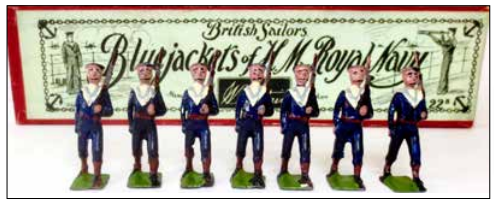
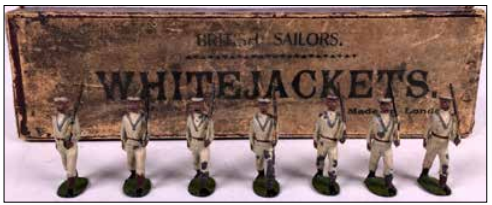
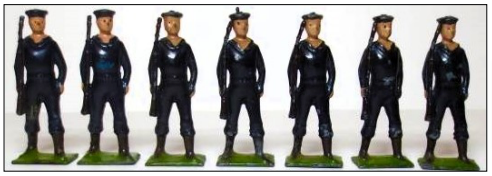
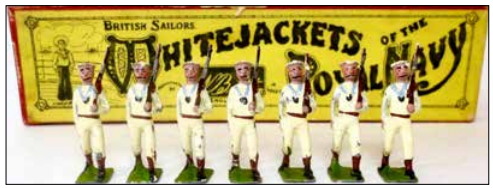
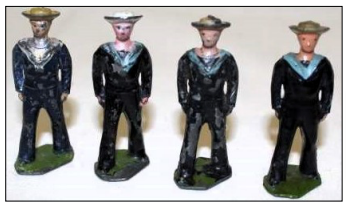
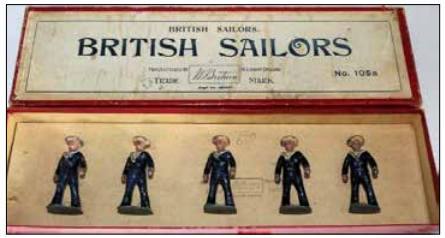
10. Larger Display Sets
Britains also produced a number of large sets, including Set 1648. This was a spectacular 51 piece display which combined all of the single row sets, including:
- The landing party from Set no.79, with a running petty officer, limber and gun pulled by 8 running sailors;
- Set no. 78, bluejackets running at the trail, 8 pcs;
- Set no.80, whitejackets running at the trail, 8 pcs;
- Set no.207, admirals, midshipmen and petty officers; and
- a double row of 16 bluejackets from Set 1510, marching without weapons.
This set did not enter catalogue until 1940 and was only made in 1940 and 1941.
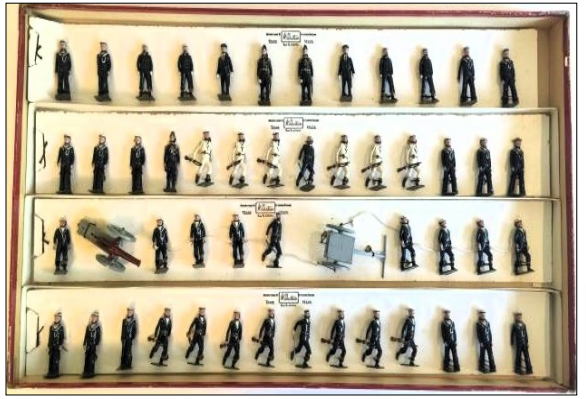
Other displays are listed below:
Set No. 408. Royal Navy Bluejackets. A 16 piece display box. Running at the trail. Produced 1930 1932. [not shown]
Set No. 409. Royal Navy Whitejackets. A 16 piece display box. Running at the trail. Produced 1930-1932.[ not shown]
Set No. 417. Royal Navy Admiral with Bluejackets. A 16 piece Display box. Produced 1930-1932. [not shown]
Set No. 418. Royal Navy Admiral with Bluejackets. A 23 piece Display box. Produced 1930-1932. [not shown]
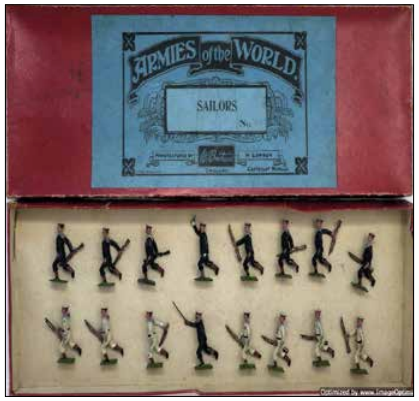
(a 16 piece display box, 1st version in a Whisstock, Armies of the World , box)
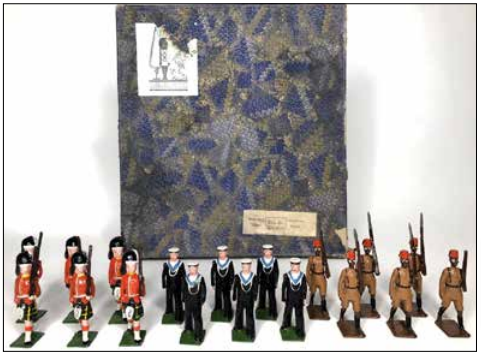
11. Military Picture Packs
Military Picture Packs were produced from 1954-1959, sold as individual figures in matching boxes. Most figures were already available in existing sets, packaged separately, a few new figures were introduced to increase the range. The Royal Navy had a number of representatives.
A counter display unit was also available. This showed the individual figures that had a number underneath corresponding to that of the Picture Pack. The idea was to present the figures in a more attractive way and to facilitate sales and the ordering of the figures. The display unit shown has 37 pieces, only two of which are naval figures.
